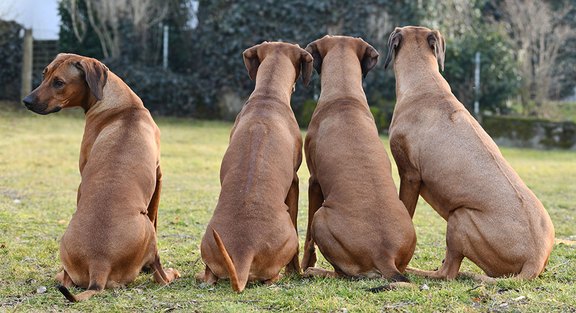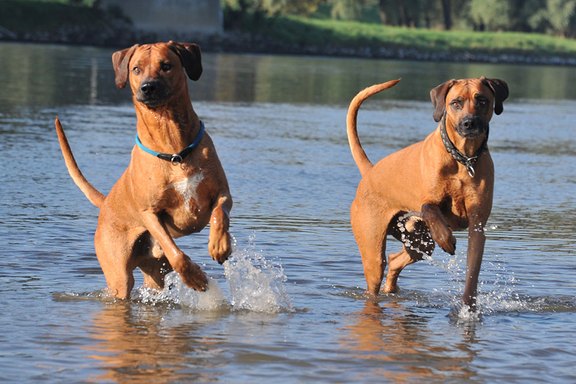The Lionhound

Origin of the Lionhound standard
The standard of the Lionhound is based on the standard of the Rhodesian Ridgeback, whose original standard was drafted by F.R. Barnes in Bulawayo (Rhodesia) in 1922 and recognized by the KUSA (Kennel Union of Southern Africa) in 1926. The ancestors of the Rhodesian Ridgeback can be traced back to the Cape Colony, where they interbred with both the dogs of the early pioneers as well as with the semi-domesticated Hottentot dogs, which had a ridge.
The difference to the Rhodesian Ridgeback
The ridge, which plays an overriding role in the Rhodesian Ridgeback, is absolutely unimportant in the Lionhound. This mutation is present in most Ridgebacks and since the Lionhound is based on this breed, these dogs are of course used in breeding. The big difference is that they should only be bred to ridgeless ones, as recommended by the VDH Scientific Advisory Board. At the moment, the breeding potential of ridgeless dogs is not yet available so this is the only way to build up a diverse breeding.
In general, dogs with a ridge should only be bred to ridgeless dogs in order to try to eliminate the number of duplicated genes at the ridge gene locus and thus hopefully also the Dermoid Sinus in the long term. Of course, this will not be achieved overnight, but this is the way to go, especially to fight against the „Qualzucht“-characteristic Dermoid Sinus. For the health of our dogs, the only way forward in the long term is to do without a mutation that is completely irrelevant for the dog and only important for us humans.

Genetic diversity
Genetic diversity is the prerequisite for the adaptability and survivability of species to changing habitat conditions, environmental influences or diseases by enabling a wide range of genetic combinations.
Maintaining genetic diversity is the ultimate goal in pedigree dog breeding and also one of the greatest challenges. It forms the basis for genetic fitness, which includes vitality, disease resistance and fertility. From a genetic point of view, pedigree dogs are an isolated population and even if the total number of dogs in a breed is constantly increasing, there is no gain of new genetic material within the population - quite the opposite. If genetically diverse dogs are then excluded from the population solely on the basis of cosmetic characteristics such as a missing ridge, too much white on the paws, etc., then this is definitely the wrong approach.
